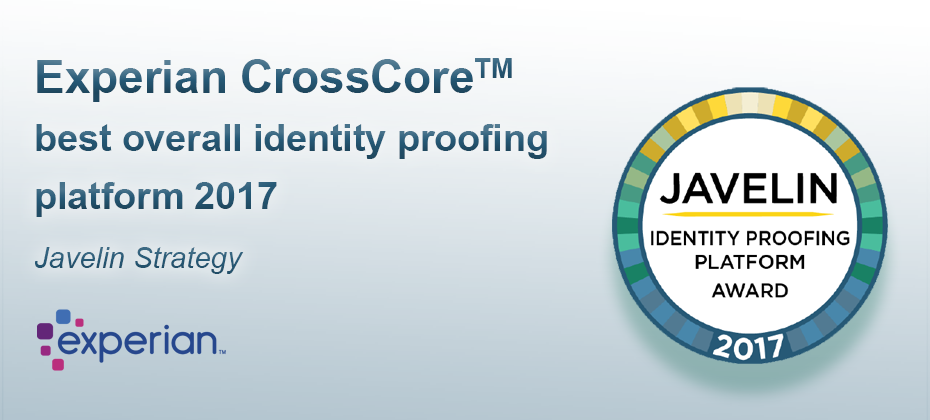All posts by Guest Contributor

You’ve been tasked with developing a new model or enhancing an existing one, but the available data doesn’t include performance across the entire population of prospective customers. Sound familiar? A standard practice is to infer customer performance by using reject inference, but how can you improve your reject inference design? Reject inference is a technique used to classify the performance outcome of prospective customers within the declined or nonbooked population so this population’s performance reflects its performance had it been booked. A common method is to develop a parceling model using credit bureau attributes pulled at the time of application. This type of data, known as pre-diction data, can be used to predict the outcome of the customer prospect based on a data sample containing observations with known performance. Since the objective of a reject inference model is to classify, not necessarily predict, the outcome of the nonbooked population, data pulled at the end of the performance window can be used to develop the model, provided the accounts being classified are excluded from the attributes used to build the model. This type of data is known as post-diction data. Reject inference parceling models built using post-diction data generally have much higher model performance metrics, such as the KS statistic, also known as the Kolmogorov-Smirnov test, or the Gini coefficient, compared with reject inference parceling models built using pre-diction data. Use of post-diction data within a reject inference model design can boost the reliability of the nonbooked population performance classification. The additional lift in performance of the reject inference model can translate into improvements within the final model design. Post-diction credit bureau data can be easily obtained from Experian along with pre-diction data typically used for predictive model development. The Experian Decision Analytics team can help get you started.

The U.S. Senate Banking Committee passed a financial regulatory relief bill (S. 2155) in December 2017 aimed at reducing regulatory burdens on community banks, credit unions and smaller regional banks. Committee Chairman Senator Mike Crapo (R-ID), sponsored the bill, which has strong bipartisan support, with 23 cosponsors (11 Republicans and 12 Democrats and an independent). The package is likely to be considered by the full Senate in early 2018. The legislation includes two provisions related to consumer credit reporting. Both were adopted, in part, in reaction to the Equifax data breach. As the bill moves through the legislative process during 2018, it will be important for all participants in the consumer credit ecosystem to be aware of the potential changes in law. One provision deals with fraud alerts and credit freezes for consumers and the other deals with how medical debt is processed for veterans who seek medical treatment outside the VA system. Credit Freezes The bill amends the Fair Credit Reporting Act to provide consumers with the ability to freeze/unfreeze credit files maintained by nationwide credit reporting agencies at no cost, and would extend the time period for initial fraud alerts from 90 days to one year. The credit freeze provisions would also establish a process for parents and guardians to place a freeze on the file of a minor at no cost. The bill would require the nationwide credit reporting agencies to create webpages with information on credit freezes, fraud alerts, active duty alerts and pre-screen opt-outs and these pages would be linked to the FTC’s existing website, www.IdentityTheft.gov. The credit freeze and minor freeze provisions would preempt State laws and create a national standard. Protections for Veterans The bill also incorporates a provision that would prohibit credit bureaus from including debt for health-care related services that the veteran received through the Department of Veterans Affairs’ Choice Program. The provision would cover debt that the veteran incurred in the previous year, as well as any delinquent debt that was fully paid or settled. The legislation would require a consumer reporting agency to delete medical debt if it receives information from either the veteran or the VA that the debt was incurred through the Veteran’s Choice Program. What’s next The bill now awaits consideration before the full Senate. Senate Majority Leader Mitch McConnell has said that the bill is a “candidate for early consideration” in 2018, but the exact timing of floor debate has yet to be scheduled. Once the package passes the Senate, it will need to be reconciled with the regulatory relief package that was passed by the House last spring.

The nation’s economic recovery is continuing in a positive upward trend with consumer credit scores coming exceptionally close to pre-recession numbers—the healthiest in a decade. Experian’s 8th annual State of Credit report reveals the nation’s average credit score is up two points year-over-year to 675, and is just four points shy of the 2007 average of 679. “The trend line we are seeing is quite promising,” said Michele Raneri, Experian vice president of analytics and new business development. “With employment and consumer confidence on the rise, the data is indicating that we have made great progress as a country since the recession. The economy is expected to expand at a healthy pace this year and we believe that credit will continue to rebound. All of the factors point towards a good year for credit in 2018.” The study also revealed that year-over-year: Personal loan and auto loan originations increased 11 percent and 6 percent, respectively. The average number of retail cards remains at 2.5 per consumer, while the average retail debt increased $73 to $1,841 per consumer. The average number of bankcards increased slightly from 3.03 to 3.06, with the average card balance also increasing by $166 to $6,354. Instances of late payments (includes bankcard and retail) remained about the same at under 1 percent. And importantly, consumers have a positive outlook with consumer confidence up 25 percent. Top of the credit charts As part of the annual study, Experian analyzed consumer credit habits in U.S. cities. As in previous years, Minnesota continues to stand out with three of its cities — Minneapolis, Rochester and Mankato—leading the way with credit scores of 709, 708 and 708, respectively. Wausau, Wis. (706), Green Bay, Wis. (705) round out the top five. Again, Greenwood, Miss., and Albany, Ga., ranked the lowest with scores of 624 and 626. While still at the bottom of the list, Greenwood and Abany residents did improve their scores by two points. Riverside, Calif.,—fifth on the list—improved its score by four points—the greatest increase of any city in the bottom 10. Generational divide Taking the research further, Experian analyzed consumer credit information by generation, and found: Generation Z (born 1996 and later) is building credit through different methods than the generations before them, with heavier student loan debts and fewer credit cards and department store cards. And they are keeping debts low and managing them well. Generation Y/Millennials (born 1977-1995) have seen their scores climb four points over the past year. They’ve also decreased their overall average debt by nearly eight percent, but have added six percent in mortgage debt. Generation X (born 1965-1976) has a credit score of 658, the highest mortgage debt of all generations, and a high instance of late payments compared to the national average. Their scores have improved, so they are managing their debts better than in the past,. Baby Boomers (born 1946-1964) continue to carry quite a bit of mortgage debt, and have the lowest late payment instances of all the generations. The Silent Generation (born 1945 and before) has quite a bit of mortgage debt, but are keeping other debts low and making payments on time. At 729, they have the best credit score of all generations and the fewest late payments of any generation. To review findings from Experian’s 2017 State of Credit report, join WiseBread’s chat Jan. 18. To register, go to www.wisebread.com and follow #wbchat. To chat with Experian live, and learn more about credit, join #CreditChat hosted by @Experian_US on Twitter every Wednesday at Noon PT/3 p.m. ET.

The multitude of modern fraud strategies available today necessitates applying an appropriate level of confidence to increase the likelihood of catching fraudsters without disrupting legitimate customers’ experiences. This approach is known as “rightsizing” your fraud solution. Here’s how fraud detection rates can be improved while reducing the number of false positives and disruption of legitimate customers: A right-size approach means tackling your fraud problem with a highly tailored solution that enables your business rather than crippling it. Next week, we’ll discuss this forward-looking approach to fighting fraud, or you can jump ahead and read our latest tip sheet. Tip sheet>

You just finished redeveloping an existing scorecard, and now it’s time to replace the old with the new. If not properly planned, switching from one scorecard to another within a decisioning or scoring system can be disruptive. Once a scorecard has been redeveloped, it’s important to measure the impact of changes within the strategy as a result of replacing the old model with the new one. Evaluating such changes and modifying the strategy where needed will not only optimize strategy performance, but also maximize the full value of the newly redeveloped model. Such an impact assessment can be completed with a swap set analysis. The phrase swap set refers to “swapping out” a set of customer accounts — generally bad accounts — and replacing them with, or “swapping in,” a set of good customer accounts. Swap-ins are the customer population segment you didn’t previously approve under the old model but would approve with the new model. Swap-outs are the customer population segment you previously approved with the old model but wouldn’t approve with the new model. A worthy objective is to replace bad accounts with good accounts, thereby reducing the overall bad rate. However, different approaches can be used when evaluating swap sets to optimize your strategy and keep: The same overall bad rate while increasing the approval rate. The same approval rate while lowering the bad rate. The same approval and bad rate but increase the customer activation or customer response rates. It’s also important to assess the population that doesn’t change — the population that would be approved or declined using either the old or new model. The following chart highlights the three customer segments within a swap set analysis. With the incumbent model, the bad rate is 8.3%. With the new model, however, the bad rate is 4.9%. This is a reduction in the bad rate of 3.4 percentage points or a 41% improvement in the bad rate. This type of planning also is beneficial when replacing a generic model with another or a custom-developed model. Click here to learn more about how the Experian Decision Analytics team can help you manage the impacts of migrating from a legacy model to a newly developed model.

Cybersecurity has become one of the most significant issues impacting international security and political and economic stability. Our new report, Data Breach Industry Forecast 2018, outlines 5 predictions for the data breach industry in the coming year. Here are 3: The U.S. may experience its first large-scale attack on critical infrastructure, causing disruption for governments, companies and private citizens. Failure to comply with the new EU regulations will result in large penalties for U.S. companies. Attackers will use artificial intelligence to render traditional multifactor authentication methods useless. Read all five predictions>

Auto originations continue to increase — particularly within prime categories. According to Experian’s latest State of the Automotive Finance Market report: Prime consumers grabbed the lion’s share of the total finance market, at 40.9%. Super-prime buyers showed the largest increase, reaching 20.2%. Consumers outside the prime category (credit score of 600 or lower) decreased to the lowest share on record since 2012. Credit unions and captive lenders increased market share of total vehicle financing, growing to 21% and 29.8% — an increase of 6.9% and 35.1%, respectively. As auto loan originations continue their upward trend, lenders can stay ahead of the competition by using advanced analytics to target the right customers and increase profitability.

Traditional verification and validation parameters alone are not enough to stop identity fraud. Fortunately, there are many emerging trends and best practices for modern fraud and identity strategies: Applying right-sized fraud and identity proofing solutions to reduce user friction and manage fraud risk appropriately. Maintaining a universal user view by employing diverse breadth and depth of data assets and applied analytics. Expanding the user view through a blended ecosystem by collaborating with vendors, peer agencies, and partners in identity and fraud management. The future of identity proofing is more than just verifying individual identities. Check out our tip sheet linked below for more strategies. Modernize your fraud and identity strategies>

Alternative Data Shedding New Light on Consumers Why Investors Want Alternative Data Banks and Tech Firms Battle Over Something Akin to Gold: Your Data Alternative data for credit has created national headlines in the past year and a lasting buzz in the financial services world. But what exactly qualifies as alternative data in credit? How can it benefit lenders? Consumers? Ask two people these questions and you may get very different answers. Experian defines alternative data as FCRA-compliant data points that are not typically considered when evaluating a potential customer’s creditworthiness. These data points may include rent payments; utility payments, including gas, electric; telecommunications payments, such as mobile telephones; insurance payments; and any other recurring financial obligations. Taking these alternative data points into account can benefit consumers and lenders in multiple ways. Consider that roughly 45 million Americans have either no credit history, or a credit history that is too scarce or outdated to manufacture a credit score. This group of consumers includes not only minority consumers or those from low income neighborhoods, but also the shared economy workforce and millennials without traditional credit histories. Some estimate 121 million U.S. adults are credit-challenged with thin-to-no credit file and subprime credit scores below 600. “People with little or no credit history, or who lack a credit score, have fewer opportunities to borrow money to build a future, and any credit that is available usually costs more,” said Richard Cordray, while he was director of the Consumer Financial Protection Bureau. Indeed, these consumers are in a catch-22; many lenders will not lend to consumers with credit scores of under 620. In turn, these consumers have trouble building credit, and they are blocked from achieving goals like buying a car, owning a home or starting a business. By combining credit reports with alternative data, a more complete picture of subprime, near-prime and thin-file consumers can develop. And analysis of this data can help lenders evaluate a consumer’s ability to pay. When alternative data like rent payments and an individual’s short term lending history are trended appropriately, it can be an accurate predictor of an individual’s financial behavior, and can be an important step toward promoting greater financial inclusion for more consumers. In addition to using alternative data in underwriting, lenders can leverage the data to help with: Expanding the prospecting universe. Data can be used to enrich batch prospecting decisioning criteria to identify better qualified prospects, suppress high-risk consumers, and offer a more complete borrowing history Account review. Alternative data can help signal a consumer’s financial distress earlier, better manage credit lines and grow relationships with existing consumers. Collections. Identify consumers who are rebuilding credit with specialty finance trades, or who are exhibiting high-risk behaviors in the alternative financial services space. More info on Alternative Credit Data More Info on Alternative Financial Services

For most businesses, the customer experience is at the heart of every strategy. Debt collection shouldn’t be different. Here’s why: 21% of visits to an online debt recovery system were made outside the traditional working hours of 8 a.m. to 8 p.m. Of the consumers who committed to a repayment plan, only 56% did so in a single visit. PricewaterhouseCoopers reported that 46% of consumers use only digital channels to conduct banking, avoiding traditional offline channels. Conversely, data collected by Gallup between 2013 and 2016 showed that 48% of American banking customers would only consider using a bank that offered physical branches. The debt collection process is an often-overlooked opportunity to build customer relationships and loyalty. Leverage data and technology to replace outdated approaches, minimize charge-offs and create environments that value each customer. Learn more>

It’s no secret. Consumers engage and interact with brands through a variety of channels, including email, direct mail, websites and mobile. And since most organizations work to keep the consumer experience at the core, they tend to invest in an omnichannel approach that caters to the consumer’s preferences. The lone exception may be during the collections process. Often, once an account falls behind on payment, the consumer experience falls behind with it. But should it? While many banks and financial institutions view the collections process merely as an opportunity to collect outstanding debt, the potential is much more. If treated effectively, the collections process can present an opportunity to develop a positive customer relationship that builds loyalty over time. If handled poorly, the collections process could cost an organization a number of lifetime customers. To correct this, banks and financial institutions need to implement the same omnichannel approach in the collections process as they do with every other consumer interaction. Collections can no longer be treated as a linear process that leads from one channel to the next. There needs to be a more personalized touch — communicating with consumers through preferred channels, contacting them at the most opportune times. Sound complex? Sure. But consider a recent Experian analysis that invited consumers to establish a nonthreatening dialogue with an online debt recovery system. The analysis revealed 21 percent of visits to an organization’s website were outside the traditional working hours of 8 a.m. to 8 p.m. Furthermore, of the consumers who committed to a repayment plan, only 56 percent did so in a single visit. Each consumer is different. So is each situation. And banks and financial institutions need to acknowledge those differences. Luckily, technology can address the complexities of an omnichannel and personalized approach. Platforms such as Experian’s PowerCurve® Collections enable banks and financial institutions to simplify the collections process for both the consumer and the organization. By treating the collections process the same as any other stage in the consumer journey, organizations have an opportunity to build a relationship. And to do so, banks and financial institutions need to leverage the data and technology at their disposal. If they do so appropriately, they’ll minimize their charge-offs and also create a lifetime customer. To learn more about leveraging the collections process to build customer loyalty, download our white paper Getting in front of the shift to omnichannel collections.

The credit card marketplace is a crowded and complex landscape. Recent research by Experian shows the average U.S. consumer has 3.1 credit cards and 2.5 retail cards, with an average balance of $6,354 and $1,841, respectively. So how can you build upon your existing customer relationships and offer the right products to the right people at the right time? By understanding consumer behavior. Pretty simple concept. But targeting viable consumers and making enticing offers takes some detective work. Gone are the days of demographic-based approach to audience segmentation for credit marketing campaigns. Consumers are now engaged on their smartphones, laptops, tablets, fitness bands, across countless apps, browsers, emails and more. Simply knowing a person’s gender and age doesn’t provide any information about how he spends the day, his consumer behaviors, personal interests, unique wants or needs. Developing rich consumer personas based on transaction credit data can be a powerful tool to understanding consumers so lenders can design more relevant and personalized credit offers, experiences and products to a very targeted audience. Experian DataLabs can help by analyzing transaction data to understand the consumers in your portfolio. For example, looking at your portfolio of 40-year-olds in the U.S. provides basic demographic information. A closer look at transaction data could reveal unique details within the age group to help you group and target, such as: Frequent travelers: These road warriors log serious miles. If they’re not traveling for work, they’re cashing in miles for vacation. This unique group leads your portfolio in airfare, cruise line, car rental, hotel and travel agency spend. With so much time spent away from home, this group is rarely found in grocery stores. Local business owners: Advertising, computer equipment, and software are typical expenses of this segmented group. There may be an opportunity to capture spend outside their business activity or to ensure they have the right card to fit their business needs. Constant commuters: These consumers use their card for local travel and transportation. And they are less likely to use their card for expenses related to other types of travel or maintaining a vehicle. After a long day, they like to grab a drink while waiting for the train. Online Shoppers: Consumers in this group use their card with various online merchants, including Amazon, Etsy, iTunes, and PayPal. Online shoppers are also above average spenders in elementary education, child care services, and family clothing. Social hipsters: They can be found meeting with friends for coffee and drinks, and are more likely to rely on local transportation and tend to eat out instead of cooking in. Effective audience segmentation ensures that your marketing dollars are invested in real people who are most likely to respond on certain media, have already expressed an interest in your product, and are geographically accessible to a specific retail location. Every campaign should be as dynamic and unique as its consumers. The powerful combination of consumer and transaction data allows you to customize audience segments to maximize customer engagement and drive campaign success.

Sophisticated criminals work hard to create convincing, verifiable personas they can use to commit fraud. Here are the 3 main ways fraudsters manufacture synthetic IDs: Credit applications and inquiries that build a synthetic credit profile over time. Exploitation of authorized user processes to take over or piggyback on legitimate profiles. Data furnishing schemes to falsify regular credit reporting agency updates. Fraudsters are highly motivated to innovate their approaches rapidly. You need to implement a solution that addresses the continuing rise of synthetic IDs from multiple engagement points. Learn more

With 81% of Americans having a social media profile, you may wonder if social media insights can be used to assess credit risk. When considering social media data as it pertains to financial decisions, there are 3 key concerns to consider. The ECOA requires that credit must be extended to all creditworthy applicants regardless of race, religion, gender, marital status, age and other personal characteristics. Social media can reveal these characteristics and inadvertently affect decisions. Social media data can be manipulated. Individuals can represent themselves as financially responsible when they’re not. On the flip side, consumers can’t manipulate their payment history. When it comes to credit decisions, always remember that the FCRA trumps everything. Data is essential for all aspects of the financial services industry, but it’s still too early to click the “like” button for social media. Make more insightful decisions with credit attributes>

Juniper Research recently recognized Experian as a Fraud Detection and Prevention Market Leader in its Online Payment Fraud Whitepaper. Juniper also shared important market insights in the report. The transactional value of card-not-present fraud is estimated to reach $19.3 billion in 2022. Online payment fraud is anticipated to grow 13.7% annually from 2017 to 2022. Digital banking fraud should reach $7.9 billion by 2022. $50.9 billion is expected to be spent on fraud detection and prevention software between 2017 and 2022. Fraud’s not going away anytime soon. Protecting your organization and customers is the new cost of doing business. Don’t wait until 2022 to start protecting yourself. Read the report>